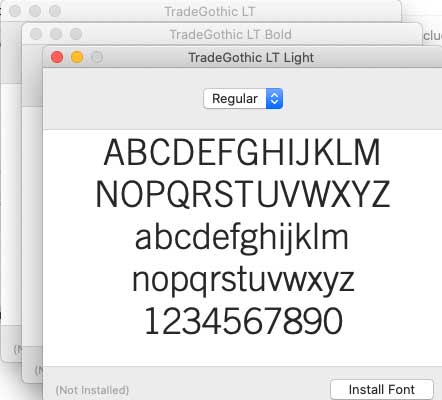When you purchase through links on our site, we may earn a commission. Here’s how it works.

What exactly is the need for all these file formats, and what do they do? We take you through the file jungle, sort out the most common and important file formats, and show you what they do, what they’re used for, and which piece of software you need to open them.
Article Overview
File Formats Explained
When it comes to working with graphic design, website construction or even on a personal blog, things tend to get a little confusing without the knowledge of file formats. Even sharing a photography or image online can be aggravating unless you are familiar with the different types of file formats. Depending upon the media that you are working with and the action that you are trying to take in regard to that media, there are various file formats that you should be aware of as well as the flexibility and purpose of each. Whether you are uploading a picture to a blog, editing a video for uploading or making your own mix CD the file formats explained below play an important part in understanding and completing the process.
Audio File Formats

MP3
The MP3 audio file format is perhaps the most recognized of all due to the popularity of MP3 players in today’s society. The MP3 file format is an audio encoding format that is also known as the MPEG-1 or MPEG-2 Audio Layer 3 but most people do not recognize these terms as they do the term “MP3”. This type of file format was created by the Moving Picture Experts Group (MPEG) and was published in 1993. MP3 files are formed through a process known as “lossy” compression, which is a process of encoding the data where some of the material is lost; however, the final product is close enough to the original format to prove useful. The reason that “lossy” compression is utilized for audio files is that the original format is generally extremely large and if it remained as such a large file placing a “playlist” on an MP3 player would be virtually impossible due to the size of the individual files.
MP4
The MP4 audio file format is becoming increasingly recognized by users of the video iPod since MP4 file formats can not only hold audio data but they can also hold video data as well. Like the MP3 file format MP4 files can be streamed via the web. The MP4 file format was published for the first time in 2001 and its creation was based upon the QuickTime video format. One confusing aspect of MP4 files for many people is that while most people refer to all aspects of this file type as MP4, the audio files alone are generally recognized by .M4A extensions rather than .MP4 extensions. Just to make things a little more confusing some audio only files utilize an .MP4B extension, generally these types of files are used with audio books since they allow for the file to bookmark your last location and take up where they last left off upon restarting.
WAV

WMA
WMA files are otherwise known as Windows Media Audio files because the compression technology utilized to create these files was developed by Microsoft. The initial marketing of the WMA file format in 1999 was based around claims that Microsoft had been able to take MP3 files and compress them further without sacrificing sound quality. These claims of superior audio in a smaller package were quickly met with disagreement and Windows continued to develop their technology. The original WMA files were toted as being 64 Kbits/second and like the MP3 files they were classified as “lossy” audio files. The most improved version of WMA files is the Windows Media Audio Professional or WMA Pro files which are WMA files utilizing the most modern compression technology.
AIFF
AIFF audio files are also known as Audio Interchange File Format files. AIFF files are among the oldest audio file formats being introduced by Apple in 1988. AIFF files contain uncompressed or raw audio file data which is both a positive and a negative depending upon how you look at it. Since AIFF files are uncompressed data it allows for much faster streaming of audio; however, since the files are so much larger they take up considerably more disk space. The thing that many Apple lovers like about AIFF files (this file format is used most often on Apple systems) is the clarity of the audio since there is no loss of data as occurs in lossy data formats.
Other formats include OGG and MID but those are not as widely used.
Image File Formats

We Review The Best Stock Photo Providers
JPEG
The JPEG image format is otherwise known as the Joint Photographic Experts Group and the name actually refers to the compression method utilized to store the image data. JPEG is the most commonly recognized file extension for image files and is supported by digital cameras as well as they generally output in .jpg format. The size of JPEG images varies depending upon the content of the image as well as how highly it is compressed. High compression in JPEG images creates a grainy look and an overall poor quality image. JPEG images are characterized by a 24-bit total, meaning that they carry 8-bits per color.
TIFF
The TIFF image format is also known as the Tagged Image File Format and while it is not generally utilized online due to the large size of these images, it is widely accepted in other fields including print and photography. Some digital cameras allow for .TIFF files to be saved directly to the memory of the camera rather than JPEG formats. Where JPEG files only allow for a 24-bit total, the TIFF format can allow for either 24 or 48-bit totals making them much larger.
RAW

PNG
The PNG is also known as the Portable Network Graphics file format and was produced as a successor to the GIF as it supports many more colors than the GIF extension. PNG files tend to be larger than JPEG images; however, they have the ability to incorporate transparent backgrounds making them useful when incorporating them in to web design elements.
GIF
The GIF file extension is also known as the Graphics Interchange Format and is a particularly limited image extension in that it only allows for 256 colors. Such a limited color palette makes it difficult to work with photographic images in GIF form; however, hand drawn elements such as clip art are much more supported by this extension. The most commonly used method of using the GIF extension is to use it for animated images such as flashing banners and advertisements.
BMP
The BMP file format is also referred to as the Windows bitmap file extension and is utilized by the Windows operating system. At one time BMP files were popularly used; however, due to their large size they are rarely utilized anymore. Bitmap files are easy to work with on Windows operating systems; however, their size makes them impractical and they can be difficult to work with when utilizing Mac based operating systems.
PSD
PSD files are not so much image files as they are graphic source files that belong to the Adobe software Photoshop. Photoshop documents allow for saving of images along with any editing adjustments that have been made to the original image. PSD files cannot be directly displayed in browsers and must be exported in another image format. However, they are utilized with Adobe
Photoshop and Adobe Illustrator (as well as a variety of other Adobe based software) to make adjustments to images before exporting.
Adobe Photoshop image files can be worked with on both Windows and Mac operating systems and allow for a wide range of photo edits and adjustments to be made to an existing image as well as for original images to be created.
Learn More In Our Photoshop Review
PSP
PSP image files are similar to Adobe Photoshop documents only they are created for the Corel Paint Shop Pro software. Paint Shop Pro is not as widely utilized by professional designers and image editors; however, since it is often included in software packages when purchasing a new computer where Adobe Photoshop is not, many home users utilize this image editor.
Vector Graphics Files
Vector graphics are file types that utilize geometric elements to represent images, these types of graphics are often required in the printing and promotional industries. The extensions used for vector graphics vary depending upon the software used to create them. Below you will find some of the most commonly recognized vector graphics files.
- AWG– A vector graphics that have been created using Ability Draw software.
- AI– A file created using Adobe Illustrator software.
- CDR – Graphics that have been created using CorelDraw software. There is also a CMX file extension which refers specifically to a vector image created using CorelDraw software.
- EPS – Short for Encapsulated PostScript it’s a file used in vector-based images in Adobe Illustrator.
- ODG – Created in OpenDocument software.
- SVG – Vector image files that use XML to create images.
- CGM– Also recognized as Computer Graphics Metafile files and are an ISO standard file type.
- WMF – Windows Meta Files.
Find out more about the various graphic design software options.
Video File Formats

MPEG
The MPEG file format was first introduced in 1993 by the Moving Picture Expert Group as a method of delivering both audio and video data by encoding it at the quality level of a CD. MPEG files are generally not preferred currently due to the creation of much higher quality video file extensions that allow for higher quality audio and picture production. The Moving Picture Expert Group is continually working to improve upon this coding format and as a result they have currently released MPEG-1, MPEG-2, MPEG-4, MPEG-7, MPEG-21, MPEG-A, MPEG-B, MPEG-C, MPEG-D, MPEG-E, MPEG-V, MPEG-M and MPEG-U. The latest of these releases was MPEG-U which was released in 2010.
AVI
The AVI file format is also known as the Audio Video Interleaved format and made its way on to the market in 1992 when it was released by Microsoft. AVI files give playback of audio and video simultaneously but they also allow for split streaming, however, this is not commonly utilized. The AVI format is not as commonly utilized as other video file formats due to the fact that they are slow on keeping up with changes in technology and as such playback is often interrupted or affected by an inability for the AVI format to function properly.
QuickTime
The QuickTime file format, also known as QTFF is a file format that was developed by Apple for use with the QuickTime application. Due to the structure of QuickTime files and the QuickTime software this type of video file format is often utilized by video editors because it is conducive to restructuring and editing.
FLV

MP4
MP4 files, also known as MPEG-4 files are versatile files that are able to not only broadcast audio and video but they are also able to broadcast images and subtitles as well. MP4 files can be streamed via the internet like many other video files. As mentioned above in the audio file section, the audio only aspect of MP4 files is referred to as M4A; however, when referring to audio and video the file extension is MP4. MP4 files are common among Apple users particularly those with iPhones and iPod devices.
RM
RM files are also known as Real Media files and is a format of video utilized by RealNetworks to be utilized on RealVideo and RealAudio. This method of delivering video content is utilized to deliver streaming content via the net.
Other common formats include WMV for Microsoft videos, MOV for iOS and Macintosh videos and FLA for Adobe Flash, which is quickly becoming obsolete and replaced by HTML5.
Other File Formats
In addition to office formats you might be familiar with like PDF, TXT, DOC, XLS, and PPT there might be some more unfamiliar extensions you are curious about. We also go in more depth and cover all sorts fo web file formats including XML, PHP, CSS and HTML in our how to make your own website guide
Compressed File Formats
On occasion when data files are too large to be transferred in original format they are compressed utilizing a compression program. Each program and compression method used will result in a file extension that resembles one of the following.
- .Zip – The most commonly recognized file compression format. This format results when data is compressed and archived to reduce the size of numerous files or folders bundled together. Zip file formatting allows for the use of a number of compression algorithms. This format is one of the oldest compression formats used; it made its debut in 1989.
- .RAR – The second most recognized file compression format and often programs offer the option of choosing between .RAR and .Zip compression. RAR stands for Roshal Archive and it supports file spanning and error recovery in addition to data compression. The initial release of the .RAR format was in March of 1993. .RAR files can only be created through the use of specific commercial software due to the licensing requirements for the file format.
- .tar – Not as commonly seen as other compression file formats, however, there are still many people who utilize .tar files. .tar file compression was created to be written to I/O devices to allow for tape backup but it is currently used to compress data while allowing for group and user permissions, directory structures and dates all to remain intact.
Database File Formats
Many programs and applications rely upon database systems to run and function properly, due to variation in these programs and applications, database files can be formatted in a variety of methods. Some of the more popularly seen database file formats can be seen below.
- ACCDB – Used to recognize a Microsoft database such as that utilized by Microsoft Office
- LDB – To recognize temporary database files; since these files are temporary they only exist during the time that the database itself is open
- DAT – A file format used to recognize DOS basic database files
- DB – For both Paradox and SQLite database files
- MDB – Microsoft database files
- NSF – Files used for Lotus Notes
- PDB – A format for Palm OS
- WDB – Microsoft Works
- ADP – Microsoft Access files used to access databases that are located on a server
- WMDB – File formats are used to recognize database files for Windows Media
Desktop Publishing File Formats
There are a handful of desktop publishing software applications that allow for the creation of web pages and website files. These software applications offer users the ability to save in “raw” format – that is a file that opens directly in the desktop publishing program in which it was created. Depending upon the desktop publishing software used, you will find that your file has a specific format such as those covered below.
- INDD – Adobe InDesign desktop publishing software
- PMD – Adobe PageMaker desktop publishing software
- PPP – Serif PagePlus desktop publishing software
- MCF – FotoInsight Designer desktop publishing software
- PUB – Microsoft Publisher desktop publishing software
- SLA or SCD – Scribus desktop publishing software
- FM – Adobe FrameMaker desktop publishing software
Font Files

- TTF – TrueType font files; these are one of the most commonly found font file formats
- FON – Bitmapped font files used by Microsoft Windows
- FNT – Fonts through the Graphical Environment Manager
- OTF – OpenType font files, these are another of the more commonly found font file formats
- BMF – ByteMap font formats
- BDF – Bitmap distribution format fonts
- TDF – TheDraw font file formats
- PCF – Portable compiled font files
Any File Types We Missed?
We covered quite a bit but let us know if there’s something else you have a question about. Perhaps there is some strange, obscure file that you can’t open or run because you don’t know what it is? Comment below or on the page specific to the file format you have a question about (if you know what type of file it is), and we’ll do our best to help you solve the mystery! Dive deeper and grow your skills with an online course and put these files to the test. Our experts review the best online learning platforms to do so.
What’s the weirdest file extension you’ve come across? Let us know in the comments!
Tagged With:



